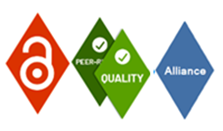Comparison of Chinese and Malaysian Media Literacy: An Analytical Study
DOI:
https://doi.org/10.53724/ambition/v7n3.06Keywords:
Media literacy, Online communication, Fake news, Media communicationAbstract
Media literacy refers to the ability to select, fully absorb, analyze, and react critically to the multitude of types of information disseminated by the media. Important components of media literacy include avoiding creating or disseminating false news and respecting other people's rights and privacy. In the era of the Internet, online media literacy is a brand-new subset of media literacy. In addition to the information use and critical literacy skills found in conventional media, online information creation, online communication, social collaboration, and social participation skills are included as well.
References
Tan Q, Xing Q, Zhang J, et al., 2012. Media Literacy Education in Mainland China: A Historical Overview [J]. International Journal of Information and Education Technology, 381–385 [2022–05–15]. DOI: 10.7763/ijiet.2012.v2.158.
Pandian A, Balraj S, 2010. Driving the Agenda of Learning by Design in Science Literacy in Malaysia [J]. E-Learning and Digital Media, 7(3): 301–316[2022–05–15]. DOI:10.2304/elea.2010.7.3.301.
Downloads
Published
How to Cite
Issue
Section
License

This work is licensed under a Creative Commons Attribution-NonCommercial 4.0 International License.
















